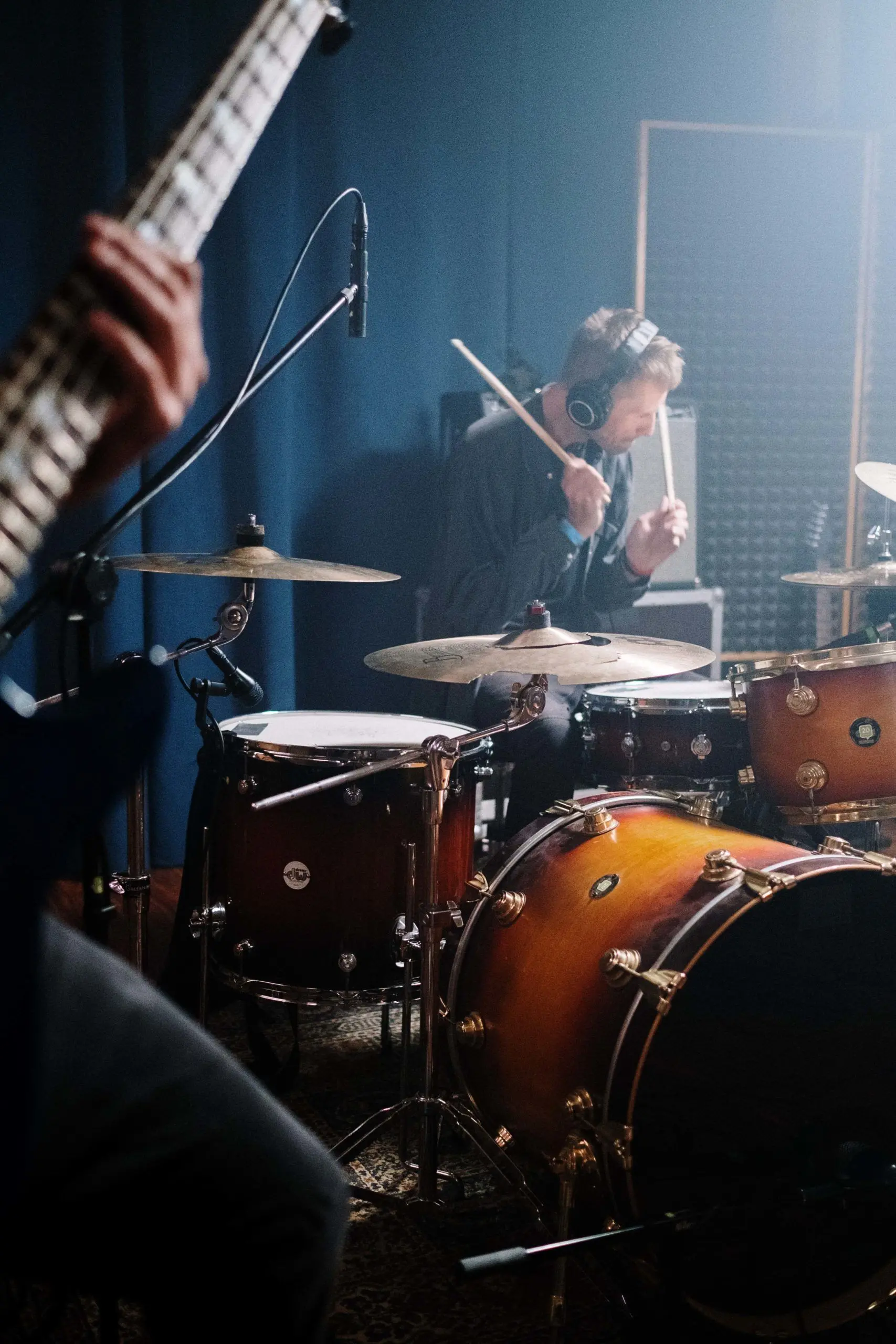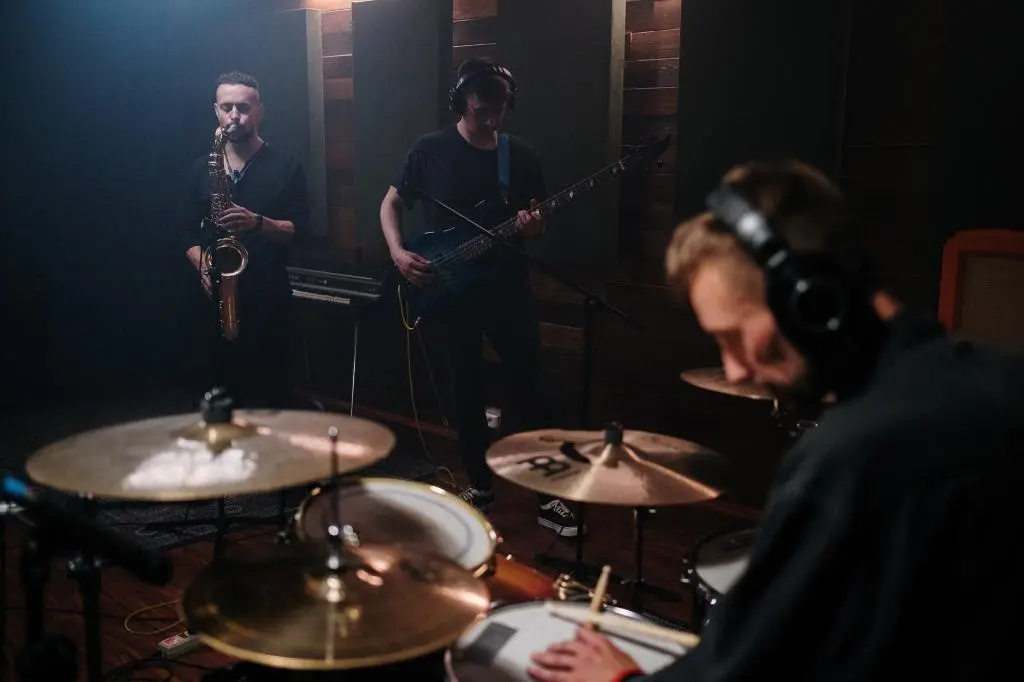In short, beat is the fundamental unit of time in music, representing the rhythm and pulse of a song.

What is Beat: Table of Contents
In the world of music, the beat is often referred to as the heartbeat of a song. It’s the rhythmic pulse that gives life to a piece of music, driving it forward and providing a foundation for all other musical elements to build upon. Just as our hearts beat steadily to pump blood through our bodies, the beat of a song pumps energy and rhythm through the music, giving it vitality and movement.
The beat is an essential component of music, serving as a fundamental unit of time and rhythm. It’s the steady, recurring pulse that you feel when you listen to a piece of music. Whether you’re tapping your foot, clapping your hands, or dancing to the music, you’re following the beat. It’s the most basic element of timing in music, and it serves as the foundation for rhythm.
The importance of the beat in music cannot be overstated. It’s the glue that holds a song together, providing a sense of structure and coherence. Without a beat, music would lack direction and flow, becoming a chaotic jumble of sounds. The beat gives music its rhythm, its groove, and its sense of timing. It’s what makes music danceable, singable, and memorable.
In this article, we’ll explore the concept of the beat in music, delving into its various aspects and nuances. We’ll discuss how the beat is used to measure the tempo and structure of a song, how it can be subdivided into smaller timing increments, and how it contributes to the overall feel of the music. Whether you’re a music producer, a musician, or simply a music lover, understanding the beat is crucial to appreciating the rhythm and pulse of a song. So, let’s dive in and explore the heartbeat of music.

The Beat Defined
At its core, a beat is the fundamental unit of time in music. It’s the rhythmic pulse that gives a song its tempo and flow. When you listen to a piece of music, the beat is the steady, recurring pattern that you hear. It’s the rhythmic foundation upon which melodies, harmonies, and lyrics are built.
A beat represents the rhythm and pulse of a song. It’s the heartbeat that drives the music forward, providing a sense of timing and structure. In a way, the beat is like the ticking of a clock, marking the passage of time in a piece of music. It’s the rhythmic framework that gives music its shape and form.
When you listen to a song, the beat is what makes you want to move. It’s the rhythmic pulse that gets your foot tapping, your head nodding, and your body swaying to the music. Whether it’s a slow, steady beat or a fast, energetic rhythm, the beat is what gives music its groove and makes it danceable.
Feeling the Beat
When we listen to music, we naturally feel the beat. It’s an instinctive response to the rhythmic pulse of the music. Whether we’re consciously aware of it or not, our bodies react to the beat. We might tap our foot, clap our hands, or even dance to the music. It’s a physical expression of the rhythm we hear.
Feeling the beat is a universal experience. It’s something that people of all ages, cultures, and backgrounds can relate to. Whether it’s a tribal drumbeat, a classical symphony, or a pop song, the beat is what connects us to the music. It’s the rhythmic pulse that resonates with our bodies and our souls.
When we tap our foot or clap our hands along with the beat, we’re participating in the music. We’re becoming part of the rhythm, joining in the groove. It’s a way of connecting with the music on a deeper level, of feeling the beat in our bones. It’s a primal, instinctive response to the rhythmic pulse of the music.
Measures and Time Signatures
In music, a measure, also known as a bar, is a fundamental building block of rhythm. It’s a segment of time that contains a specific number of beats, providing a sense of structure and organization to the music. Measures are the containers that hold the beats, giving shape to the rhythmic flow of a song.
A measure is defined by the time signature of the song, which dictates how many beats are contained within each measure. The beats within a measure are typically counted from one up to the number indicated by the time signature. This counting provides a steady, recurring pattern that forms the rhythmic backbone of the music.
Decoding Time Signatures
Time signatures are crucial in music as they define the rhythmic structure of a song. A time signature is represented by two numbers, one on top of the other, like a fraction. The top number indicates the number of beats in a measure, while the bottom number indicates the note value that represents one beat.
For example, a time signature of 4/4, commonly referred to as “four-four time,” means that there are four beats in a measure, and each beat is represented by a quarter note. This time signature is so common that it’s often called “common time.”
Let’s explore some common time signatures and their rhythmic feels:
- 2/4 Time: Two beats per measure create a simple and steady rhythm, often used in marches. The first beat is emphasized, giving a strong sense of forward motion.
- 3/4 Time: Three beats per measure create a waltz-like rhythm, with a strong emphasis on the first beat. This time signature is often used in ballroom dances and classical music.
- 4/4 Time: Four beats per measure create a balanced and even rhythm, commonly used in pop and rock music. The first and third beats are typically emphasized, giving a sense of stability and regularity.
- 5/4 Time: Five beats per measure create an irregular and syncopated rhythm, often used in jazz and progressive rock. The emphasis can be placed on different beats, creating a sense of unpredictability and excitement.
- 6/8 Time: Six beats per measure, grouped into two sets of three, create a lilting, flowing rhythm. This time signature is often used in folk music and ballads.

Subdivision of Beats
In music, a beat is more than just a simple, steady pulse. It can be subdivided into smaller timing increments, adding layers of complexity and nuance to the rhythm. These subdivisions allow for more intricate rhythmic patterns and variations within a measure.
One common way to subdivide a beat is into eighth notes. In a 4/4 time signature, a quarter note represents one beat, and it can be subdivided into two eighth notes. Each eighth note is half the duration of a quarter note, so there are eight eighth notes in a measure of 4/4 time.
Another way to subdivide a beat is into sixteenth notes. A sixteenth note is one-fourth the duration of a quarter note, so there are sixteen sixteenth notes in a measure of 4/4 time. Sixteenth notes are often used to create fast, intricate rhythms.
Other subdivisions include triplets, which divide a beat into three equal parts, and dotted notes, which add half the duration of the original note. These subdivisions allow for a wide range of rhythmic possibilities, from simple and steady to complex and syncopated.
Adding Complexity to Rhythm
Subdividing beats adds complexity and nuance to the rhythm of a song. It allows for more intricate rhythmic patterns and variations within a measure. These subdivisions can create a sense of excitement, tension, or unpredictability in the music.
For example, a simple 4/4 rhythm with quarter notes might sound like this: 1 2 3 4. But by subdividing the beats into eighth notes, the rhythm becomes more complex: 1 & 2 & 3 & 4 &. This creates a faster, more driving rhythm.
Subdivisions can also be used to create syncopation, which is a rhythmic effect that emphasizes off-beats or weak beats. For example, a rhythm with sixteenth notes might sound like this: 1 e & a 2 e & a 3 e & a 4 e & a. By emphasizing the “e” and “a” beats, the rhythm becomes syncopated and more interesting.
Subdividing beats adds complexity and nuance to the rhythm of a song. It allows for more intricate rhythmic patterns and variations within a measure. These subdivisions can create a sense of excitement, tension, or unpredictability in the music. Whether it’s eighth notes, sixteenth notes, triplets, or dotted notes, subdivisions add layers of depth and richness to the rhythm.

Setting the Pace with Tempo
Tempo, in music, refers to the speed at which a piece of music is played. It’s the rate at which the beats occur in a song, setting the overall pace and rhythm of the music. Tempo is a crucial element in music, as it affects how the music is perceived by the listener.
Tempo is measured in beats per minute (BPM). A higher BPM indicates a faster tempo, while a lower BPM indicates a slower tempo. For example, a song with a tempo of 60 BPM has one beat per second, while a song with a tempo of 120 BPM has two beats per second.
Musicians and producers use tempo to create a sense of movement and energy in the music. A fast tempo can create a sense of excitement and urgency, while a slow tempo can create a sense of calm and relaxation. Tempo is a powerful tool for shaping the mood and feel of a song.
How Tempo Shapes the Mood
Tempo plays a crucial role in shaping the mood and atmosphere of a song. It sets the overall pace of the music and affects how the listener perceives the song. Different tempos can evoke different emotions and feelings in the listener.
- Slow Tempo: A slow tempo, typically below 60 BPM, can create a calm, relaxed, and introspective mood. Slow tempos are often used in ballads, ambient music, and classical adagios. They can evoke feelings of sadness, nostalgia, or tranquility.
- Moderate Tempo: A moderate tempo, typically between 60 and 100 BPM, can create a balanced and steady mood. Moderate tempos are often used in pop, rock, and country music. They can evoke feelings of contentment, optimism, or romance.
- Fast Tempo: A fast tempo, typically above 100 BPM, can create an energetic, upbeat, and lively mood. Fast tempos are often used in dance, techno, and punk music. They can evoke feelings of excitement, joy, or aggression.
Tempo can also be used to create contrast within a song. For example, a song may start with a slow tempo and gradually build up to a fast tempo, creating a sense of tension and anticipation. Alternatively, a song may switch between fast and slow tempos, creating a sense of unpredictability and excitement.
Exploring Rhythmic Feels
The number of beats per measure, also known as the meter, is a fundamental aspect of rhythm in music. It determines the rhythmic feel of a song and plays a crucial role in shaping the overall groove. The number of beats per measure can vary depending on the style and phrasing of the song, and different numbers of beats per measure create different rhythmic feels.
- 2/4 Time: With two beats per measure, this time signature creates a simple and steady rhythm. It’s often used in marches and polkas, where the emphasis is on the first beat of each measure. This rhythmic feel is straightforward and easy to follow, making it a popular choice for many styles of music.
- 3/4 Time: With three beats per measure, this time signature creates a waltz-like rhythm. The emphasis is on the first beat of each measure, giving the music a flowing and graceful feel. This rhythmic feel is commonly used in classical music, folk music, and ballads.
- 4/4 Time: With four beats per measure, this time signature creates a balanced and even rhythm. It’s the most common time signature in Western music and is used in a wide range of genres, from pop and rock to jazz and blues. The rhythmic feel is versatile and can be adapted to suit various musical styles.
- 5/4 Time: With five beats per measure, this time signature creates an irregular and syncopated rhythm. The emphasis is typically on the first and fourth beats of each measure, giving the music a sense of unpredictability and tension. This rhythmic feel is often used in jazz, progressive rock, and classical music.
Time Signatures and Their Grooves
Different time signatures create different rhythmic feels, shaping the overall groove of the music. Here are some examples of time signatures and their associated rhythmic feels:
- 6/8 Time: With six beats per measure, this time signature creates a lilting and swinging rhythm. The emphasis is on the first and fourth beats of each measure, giving the music a sense of movement and flow. This rhythmic feel is commonly used in folk music, sea shanties, and ballads.
- 7/8 Time: With seven beats per measure, this time signature creates an uneven and syncopated rhythm. The emphasis is typically on the first, third, and fifth beats of each measure, giving the music a sense of unpredictability and excitement. This rhythmic feel is often used in progressive rock, jazz, and world music.
- 9/8 Time: With nine beats per measure, this time signature creates a complex and intricate rhythm. The emphasis is on the first, fourth, and seventh beats of each measure, giving the music a sense of depth and richness. This rhythmic feel is commonly used in classical music, jazz, and experimental music.
The Art of Changing Time Signatures
Changing time signatures within a song is a technique that can add unpredictability and complexity to the rhythm. It breaks the rhythmic mold, creating a sense of tension and interest in the music. This technique is often used in progressive rock, jazz, and classical music, where the emphasis is on experimentation and pushing the boundaries of musical conventions.
When a song changes time signatures, it disrupts the established rhythmic pattern, creating a sense of surprise and excitement. It adds an element of unpredictability to the music, keeping the listener engaged and intrigued. Changing time signatures can also create a sense of tension and release, as the music shifts from one rhythmic feel to another.
Changing time signatures is not just about creating complexity for the sake of complexity. It’s about using rhythm as a tool for musical expression. By varying the time signatures, musicians and producers can create a wide range of rhythmic feels and musical moods. It’s a way of adding depth and richness to the rhythm, creating a sense of movement and flow in the music.
Songs that Bend Time
There are many songs that change time signatures, creating a sense of unpredictability and excitement in the music. Here are some examples of songs with changing time signatures:
- “Money” by Pink Floyd: This song starts with a 7/4 time signature, creating an uneven and syncopated rhythm. It then switches to a 4/4 time signature for the guitar solo, creating a sense of tension and release.
- “Take Five” by Dave Brubeck: This jazz classic is written in a 5/4 time signature, creating an irregular and syncopated rhythm. It’s one of the most famous examples of a song with an unusual time signature.
- “Solsbury Hill” by Peter Gabriel: This song is written in a 7/4 time signature, creating a lilting and swinging rhythm. It’s a great example of how changing time signatures can add depth and richness to the rhythm.
- “Schism” by Tool: This song changes time signatures multiple times, creating a sense of unpredictability and excitement. It’s a great example of how changing time signatures can add complexity and nuance to the rhythm.
Changing time signatures is a technique that can add unpredictability and complexity to the rhythm. It breaks the rhythmic mold, creating a sense of tension and interest in the music. Whether it’s 7/4, 5/4, or any other time signature, changing time signatures adds depth and richness to the rhythm, creating a sense of movement and flow in the music. It’s a way of using rhythm as a tool for musical expression, creating a wide range of rhythmic feels and musical moods.
Crafting the Feel of the Music
The rhythmic feel of a song is shaped by several key ingredients: the number of beats per measure, the tempo, and the subdivision of beats. Each of these elements contributes to the overall feel of the music, creating a sense of groove and movement.
- Number of Beats Per Measure: The number of beats per measure, also known as the meter, determines the rhythmic feel of a song. Different numbers of beats per measure create different rhythmic feels, from simple and steady to complex and syncopated.
- Tempo: The tempo is the speed at which the beats occur in a piece of music. It’s measured in beats per minute (BPM). A higher BPM indicates a faster tempo, while a lower BPM indicates a slower tempo. The tempo sets the overall pace of the song and affects how the music is perceived by the listener.
- Subdivision of Beats: A beat can be subdivided into smaller timing increments, such as eighth notes, sixteenth notes, and so on. These subdivisions add complexity and nuance to the rhythm of the song. They allow for more intricate rhythmic patterns and variations within a measure.
These three ingredients work together to create the rhythmic feel of a song. They shape the overall groove and movement of the music, giving it a sense of timing and structure. By varying these elements, musicians and producers can create a wide range of rhythmic feels and musical expressions.
Mixing and Matching Rhythmic Elements
Different combinations of the number of beats per measure, tempo, and subdivision of beats create different rhythmic feels. By mixing and matching these elements, musicians and producers can create a wide range of rhythmic feels and musical moods.
- Relaxed and Laid-Back Groove: A slow tempo, simple meter, and minimal subdivision of beats create a relaxed and laid-back groove. This rhythmic feel is often used in reggae, soul, and R&B music.
- Fast and Energetic Rhythm: A fast tempo, complex meter, and intricate subdivision of beats create a fast and energetic rhythm. This rhythmic feel is often used in punk, metal, and techno music.
- Complex and Syncopated Pattern: An irregular meter, moderate tempo, and varied subdivision of beats create a complex and syncopated pattern. This rhythmic feel is often used in jazz, progressive rock, and classical music.
Here are some examples of songs with varying rhythmic feels:
- “Billie Jean” by Michael Jackson: This song has a 4/4 time signature, a moderate tempo, and a simple subdivision of beats. It creates a steady and groovy rhythm that makes you want to dance.
- “Take Five” by Dave Brubeck: This song has a 5/4 time signature, a slow tempo, and a complex subdivision of beats. It creates a lilting and swinging rhythm that feels both relaxed and intricate.
- “Tom Sawyer” by Rush: This song has a 7/8 time signature, a fast tempo, and a varied subdivision of beats. It creates an uneven and syncopated rhythm that feels both energetic and unpredictable.
Beat in Music Production
In music production, the beat serves as the foundation upon which the rest of the song is built. It’s the rhythmic backbone that supports the melodies, harmonies, and lyrics. Music producers use beats to create rhythm tracks, which are the driving force behind the groove and movement of the song.
When laying down the rhythm, music producers often start with a basic drum pattern. This pattern consists of a series of beats, played on different drums and percussion instruments. The kick drum provides the low-end thump, the snare drum adds the backbeat, and the hi-hat cymbals keep the time. Together, these elements create a steady and rhythmic pulse that propels the song forward.
Once the basic drum pattern is established, music producers can add other rhythmic elements to the mix. These might include handclaps, tambourines, shakers, or other percussion instruments. These additional elements add texture and nuance to the rhythm, giving it a sense of depth and richness.
In music production, the beat is more than just a series of drum hits. It’s a carefully crafted rhythmic pattern that sets the tone and pace of the song. It’s the heartbeat that drives the music forward, providing a sense of timing and structure. By laying down the rhythm, music producers create the foundation upon which the rest of the song is built.
Structuring Songs with Beats
Beats are also used to structure and arrange songs in music production. They help to define the different sections of the song, such as the verse, chorus, and bridge. By varying the beat, music producers can create a sense of contrast and dynamics within the song.
In music production, the beat often serves as the anchor that holds the song together. It provides a sense of continuity and cohesion, even as the other elements of the song change. The beat helps to establish the overall form and structure of the song, giving it a sense of shape and direction.
By structuring songs with beats, music producers can create a sense of flow and progression within the music. They can build tension and release, create peaks and valleys, and take the listener on a journey through the song. The beat serves as the roadmap that guides the listener through the different sections of the song, providing a sense of timing and pacing.
Electronic Beats and Music Production
In electronic music production, beats play an even more prominent role. They are often the central focus of the song, driving the rhythm and groove. Electronic beats are created using drum machines, synthesizers, and digital audio workstations (DAWs). These tools allow music producers to craft intricate and complex beats that are both rhythmic and melodic.
Electronic beats are often characterized by their precision and clarity. They are typically programmed using a grid or sequencer, which allows for precise timing and placement of each beat. This level of control allows music producers to create intricate and syncopated rhythms that are both groovy and hypnotic.
In electronic music production, the beat is often layered with other rhythmic elements, such as basslines, arpeggios, and loops. These additional elements add texture and depth to the rhythm, creating a sense of movement and flow. The beat serves as the foundation upon which the rest of the song is built, providing the rhythmic pulse that drives the music forward.

